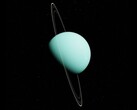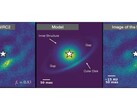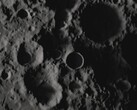The James Webb Space Telescope (JWST) is an engineering gift that keeps giving. Thanks to the extra-terrestrial telescope, NASA has produced the first-ever 3D thermal map of a planet far away from our solar system. The WASP-18b exoplanet is located 400 light-years away from Earth.
WASP-18b is an ultra-hot Jupiter with one side always facing the sun. This creates massive temperature differences between the side always bathed in light and the opposite side stuck with perpetual darkness.
Scientists can now study such tidal planets in more detail thanks to their powerful infrared-spectrum gadgetry.
How JWST turned infrared light into a 3D thermal map
The JWST’s Near-Infrared Imager and Slitless Spectrograph (NIRISS) used a procedure known as spectroscopic eclipse mapping. The process captured drops in infrared light across multiple wavelengths when the WASP-18b exoplanet disappeared behind the star it orbits completely in 24 hours.
Each wavelength passed through a different layer of WASP-18b’s atmosphere, allowing the JWST to develop a 3D temperature and composition model.
The method is useful for imaging exoplanets that cannot be observed directly due to being outshone by their host star.
A planet hot enough to destroy water
From the 3D modelling of WASP-18b, astronomers discovered the exoplanet has a very hot central spot on the light side, where temperatures approach 2,760 °C (5,000 °F). Forming a ring around this area is a cooler strip that could still vaporise metals.
Perhaps the most interesting observation is that the hotter region bears evidence of a dramatic loss of water vapour. This led the scientists to infer that WASP-18b is splitting water molecules, a hitherto unstudied phenomenon.
These latest findings represent the first time an exoplanet’s atmosphere has been mapped in 3D. Scientists can now appreciate the movement of heat on faraway planets. The methodology will be used to study other exoplanets.












































